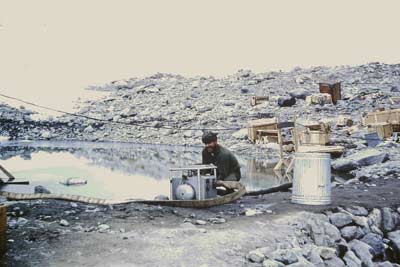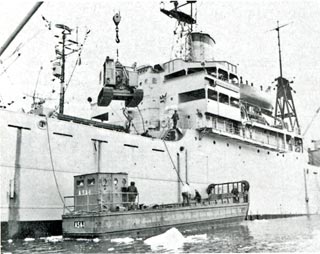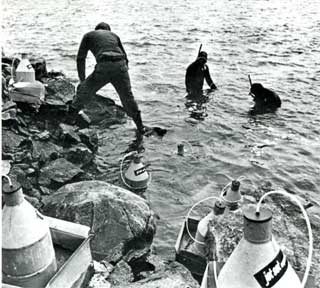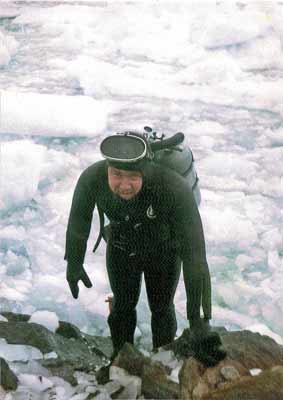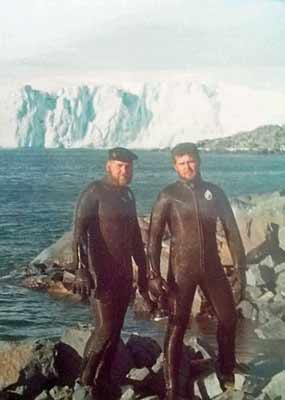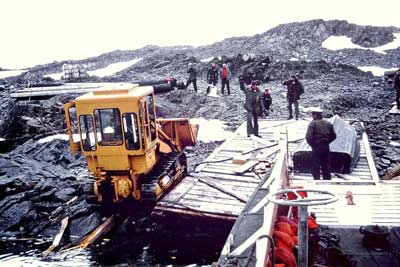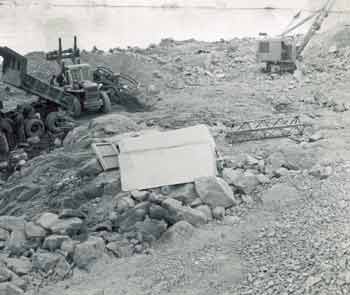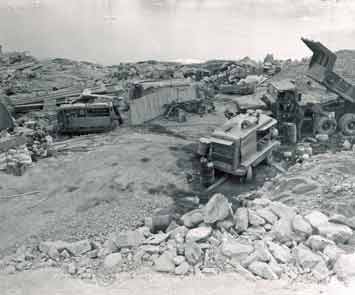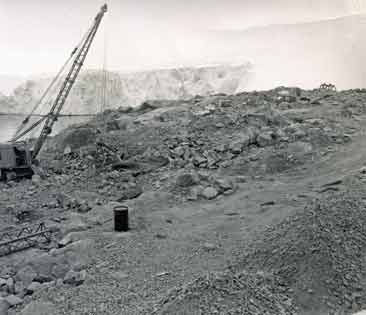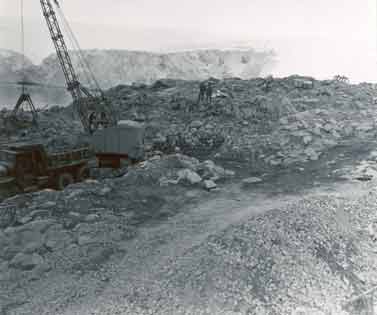Palmer Station Construction 1966-67
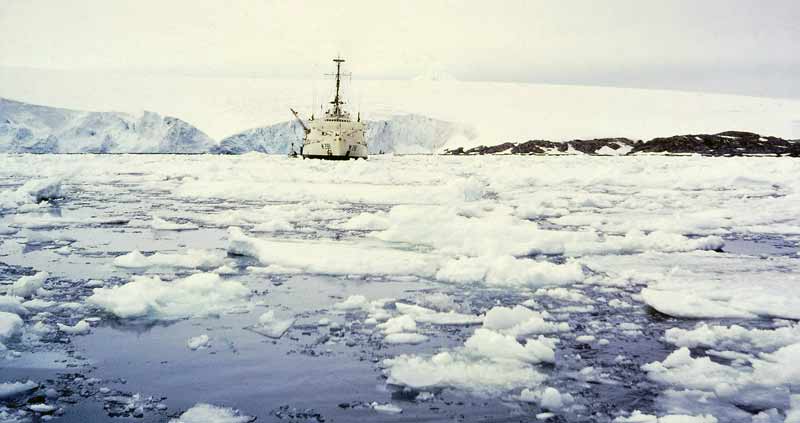
Above, Westwind in Arthur Harbor shortly after arrival. Gamage Point (WITHOUT Palmer Station!) is at right.
|
The Seabees primarily worked at Old Palmer while they awaited the heavy construction supplies to show up...they replaced a generator set and refueled the station bladders. The cargo ship Wyandot was somewhat delayed by an extended yard period, it finally departed Davisville on 6 January and arrived at Palmer on the 27th.  The USNS Wyandot shortly after its arrival at Gamage Point. On deck can be seen two LCMs which offloaded the cargo. Wyandot was offloaded in 6 days and departed for McMurdo on 4 February.
The first step on land was extensive drilling and blasting operations to level out a roadway from the boat ramp and prepare the Biolab site. This was followed by pad preparation for the two 37-foot diameter fuel tanks.Additionally, a dive team did underwater blasting to excavate the seawater intake trench using special
By 15 March, the pier had been completed, the fuel tanks were welded out and painted, and the final blasting on the Biolab site had been completed, and the foundation and subfloor erected, as seen in the photos at the bottom of this page. The subfloor work had not originally been scheduled for this season. | |
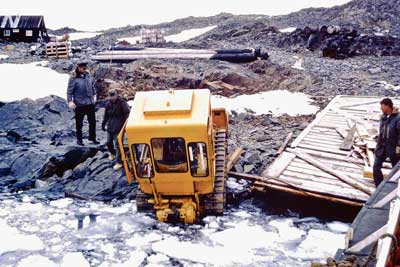 Early season at Old Palmer, the loader is about to be loaded onto an LCVP for transport to the new station site. The officer at left is Captain Fred Goettel of the Westwind, observing. The structure is FIDS (BAS) Base N, one reason Old Palmer was located here (more Base N/OP photos). |
|
| Below...4 photos of the site leveling effort for the biolab etc....not sure of the sequence (CB). | |
|
All did not go well. At one point on about 4 February, that Northwest crane seen in these photos became two-blocked, the boom raised up tight, the cable parted, and the boom fell, crushing the leg of Coast Guard SA Richard E. Hastings. Westwind soon headed north on a medevac mission...upon reaching helicopter range, SA Hastings was flown to Punta Arenas for treatment. He was later seen walking with a cane. Westwind then headed back to Palmer, arriving on about the 9th. More to come, including the photo credits...continue to page 2! | |
